- Home
- Bill Bryson
The Life And Times Of The Thunderbolt Kid: A Memoir (v5.0) Page 22
The Life And Times Of The Thunderbolt Kid: A Memoir (v5.0) Read online
Page 22
Some years later, I went away to Europe for a summer and ended up staying two years. While I was away my parents cleared out my bedroom. The posters went on a bonfire.
THERE WERE CERTAIN THINGS I couldn’t comfortably share with Jed and the one that stuck out most was my lustful wish to see a naked woman. I don’t think an hour passed in the 364 days following my rejection at the state fairgrounds that I didn’t think at least twice about the strippers’ tent. It was the only possible place to see naked female flesh in the flesh, and my need was growing urgent.
By the March following my fourteenth birthday, I was crossing off on a calendar the number of days till the state fair. By late June I was frequently short of breath. On July 20 I laid out the clothes I was going to wear the following month. It took me three hours to choose. I considered taking opera glasses, but decided against it on the grounds that they would probably steam up.
August 20 was the official opening of the fair. Normally no sane person went to the state fair on its opening day because the crowds were so vast and suffocating, but Doug Willoughby and I went. We had to. We just had to. We met soon after dawn and took a bus all the way out to the east side. There we joined the cheerful throngs and waited three hours in line to be among the first in.
At ten a.m. the gates swung open and twenty thousand people went whooping across the landscape, like the attacking hordes in Braveheart. You may be surprised to hear that Willoughby and I didn’t go straight to the strippers’ tent but rather bided our time. It was our considered intention to savor the occasion, so we had a good look around the exhibition halls. Possibly this was the first time in history that anyone has treated quilts and a butter cow as a form of foreplay, but we knew what we were doing. We wanted to let the girls have a chance to limber up, get into their stride. We didn’t wish to attend an inferior show on our first visit.
At eleven a.m. we fortified ourselves with a popular ice-cream confection known as a Wonder Bar, then proceeded to the strippers’ tent and took our place in the line, pleased to be taking up one of the privileges of our seniority. But shortly before reaching the ticket booth, Willoughby nudged me in the ribs and indicated the dangling sign. It was new and it said: “Absolutely NO MINORS! You must be SIXTEEN and have GENUINE ID.”
I was speechless. At this rate, I would be getting a senior citizen discount by the time I saw my first naked woman.
At the window the man asked how old we were.
“Sixteen,” said Willoughby briskly, as if he would say anything else.
“You don’t look sixteen to me, kid,” said the man.
“Well, I have a slight hormone deficiency.”
“You got ID?”
“No, but my friend here will vouch for me.”
“Fuck off.”
“But we were rather counting on attending one of the shows, you see.”
“Fuck off.”
“We’ve been waiting for this day for a year. We’ve been here since six a.m.”
“Fuck off.”
And so we slunk away. It was the cruelest blow I had suffered in my life.
The following week I went to the fair with Jed. It was an interesting contrast since he spent hours in the farmwives’ section chatting to ladies in frilly-edged aprons about their jams and quilts. There wasn’t a thing in the world of domestic science that didn’t fascinate him and not a single obstacle or potential setback that didn’t awake his immediate compassion. At one point he had a dozen women, all looking like Aunt Bee on The Andy Griffith Show, gathered around, all enjoying themselves immensely.
“Well, wasn’t that just wonderful?” he said to me afterward and gave an enormous happy sigh. “Thank you so much for indulging me. Now let’s take you to the strippers’ tent.”
I had told him about my disappointment the previous week, and reminded him now that we were too young to gain admission.
“Age is but a technicality,” he said breezily.
At the tent, I held back while Jed went up to the ticket window. He talked to the man for some time. Occasionally they both looked at me, nodding gravely, as if in agreement about some notable deficiency on my part. Eventually Jed came back smiling and handed me a ticket.
“There you go,” he said cheerfully. “I hope you don’t mind if I don’t join you.”
I was quite unable to speak. I looked at him in wonder and with difficulty stammered: “But how?”
“I told him you had an inoperable brain tumor, which he didn’t quite buy, and then I gave him ten bucks,” Jed explained. “Enjoy!”
Well, what can I say other than that it was the highlight of my life? The stripper—there was only one per show, it turned out, something Willoughby’s brother had neglected to tell us—was majestically bored, sensationally bored, but there was something unexpectedly erotic in her pouty indifference and glazed stare, and she really wasn’t bad looking. She didn’t strip off completely. She retained a sequined blue G-string and had nipple caps and tassels on her breasts, but it was still a divine experience, and when, as a kind of climax—a term I use advisedly but with a certain scientific precision—she leaned out over the audience, not six feet from my adoring gaze, and gave a ten-second twirl of the tassels, propelling them briefly but expertly in op- posite directions—what a talent was this!—I thought I had died and that this was heaven.
I still firmly believe it will be much like that if I ever get there. And knowing that, there has scarcely been a moment in all the years since that I have not been extremely good.
Chapter 13
THE PUBIC YEARS
In Coeur d’Alene, Idaho, after householders reported that a car was tearing around the neighborhood in reverse, Assistant Police Chief Robert Schmidt investigated and found behind the wheel a teen-age girl who explained: “My folks let me have the car, and I ran up too much mileage. I was just unwinding some of it.”
—Time magazine, July 9, 1956
ACCORDING TO THE GALLUP ORGANIZATION 1957 was the happiest year ever recorded in the United States of America. I don’t know that anyone has ever worked out why that largely uneventful year should have marked the giddy peak of American bliss, but I suspect it is more than coincidental that the very next year was the year that the New York Giants and the Brooklyn Dodgers dumped their hometown fans and decamped to California.
Goodness knows it was time for baseball to expand westward—it was ridiculous to have teams crammed into the old cities of the East and Midwest but not in any of the newer municipal colossi of the western states—but the owners of the Dodgers and Giants weren’t doing it for the good of baseball. They were doing it out of greed. We were entering a world where things were done because they offered a better return, not a better world.
People were wealthier than ever before, but life somehow didn’t seem as much fun. The economy had become an unstoppable machine: gross national product rose by 40 percent in the decade, from about $350 billion in 1950 to nearly $500 billion ten years later, then rose by another third to $658 billion in the next six years. But what had once been utterly delightful was now becoming very slightly, rather strangely unfulfilling. People were beginning to discover that joyous consumerism is a world of diminishing returns.
By the closing years of the 1950s most people—certainly most middle-class people—had pretty much everything they had ever dreamed of, so increasingly there was nothing much to do with their wealth but buy more and bigger versions of things they didn’t truly require: second cars, lawn tractors, double-width fridges, hi-fis with bigger speakers and more knobs to twiddle, extra phones and televisions, room intercoms, gas grills, kitchen gadgets, snowblowers, you name it. Having more things of course also meant having more complexity in one’s life, more running costs, more things to look after, more things to clean, more things to break down. Women increasingly went out to work to help keep the whole enterprise afloat. Soon millions of people were caught in a spiral in which they worked harder and harder to buy labor-saving devices that they wouldn’
t have needed if they hadn’t been working so hard in the first place.
By the 1960s, the average American was producing twice as much as only fifteen years before. In theory at least, people could now afford to work a four-hour day, or two-and-a-half-day week, or six-month year and still maintain a standard of living equivalent to that enjoyed by people in 1950 when life was already pretty good—and arguably, in terms of stress and distraction and sense of urgency, in many respects much better. Instead, and almost uniquely among developed nations, Americans took none of the productivity gains in additional leisure. We decided to work and buy and have instead.
Of course not everyone shared equally in the good times. Black people who tried to improve their lot, particularly in the Deep South, particularly in Mississippi, were often subjected to the most outrageous and shocking abuse (made all the more so by the fact that most people at the time didn’t seem shocked or outraged at all). Clyde Kennard, a former army sergeant and paratrooper and a person of wholly good character, tried to enroll at Mississippi Southern College in Hattiesburg in 1956. He was sent away, but thought it over and came back and asked again. For this repetitive willful uppitiness, university officials—I’ll just make that quite clear: not students, not undereducated townspeople in white sheets, but university officials—planted illicit liquor and a bag of stolen chicken feed in his car and had him charged with grand theft. Kennard was tried and sent to prison for seven years for crimes he didn’t commit. He died there before his term was completed.
Elsewhere in Mississippi in the period in separate incidents the Reverend George Lee and a man named Lamar Smith tried to exercise their right to vote. Smith actually succeeded in casting a ballot—in itself something of a miracle—but was shot dead on the courthouse steps five minutes later as he emerged with a dangerously triumphant smile. Although the killing was in broad daylight in a public place, no witnesses came forward and no assailant was ever charged. The Reverend Lee, meanwhile, was turned away at his polling station, but shot dead anyway, just because, with a shotgun from a passing car as he drove home that night. The Humphreys County sheriff ruled the death a traffic accident; the county coroner recorded it as being of unknown causes. There were no convictions in that case either.
Perhaps the most shocking episode of all occurred in Money, Mississippi, when a young visitor from Chicago named Emmett Till rashly whistled at a white woman outside a country store. That evening Till was hauled from his relatives’ house by two white men, driven to a lonesome spot, beaten to a pulp, shot dead, and dumped in the Tallahatchie River. He was fourteen years old.
Because Till was so young and because his mother in Chicago insisted on leaving the coffin open so that the world could see what her son had suffered, there was, finally, a national outcry. In consequence, two men—the husband of the woman who had been whistled at and his half brother—were arrested and a trial was duly held. The evidence against the two was pretty overwhelming. They hadn’t done much to cover their tracks, but then they didn’t need to. After less than an hour’s deliberation, the jury—all local people, all white of course—found them not guilty. The verdict would have been quicker, remarked the grinning foreman, if the jurors hadn’t taken a break to drink a bottle of pop. The next year, knowing that they could never be retried, the two accused men happily admitted in an interview in Look magazine that they had indeed beaten and killed young Till.
Meanwhile, things weren’t going terribly well for America in the wider world. In the autumn of 1957, the Soviets successfully tested their first intercontinental ballistic missile, which meant that now they could kill us without leaving home, and within weeks of that launched the world’s first satellite into space. Called Sputnik, it was a small metal sphere about the size of a beachball that didn’t do much but orbit the Earth and go “ping” from time to time, but that was very considerably more than we could do. The following month the Soviets launched Sputnik II, which was much larger at eleven hundred pounds and carried a little dog (a little Communist dog) called Laika. Our vanity stung, we responded by announcing a satellite launch of our own, and on December 6, 1957, at Cape Canaveral in Florida the burners were fired on a giant Viking rocket carrying a fancy new Vanguard satellite. As the world watched, the rocket slowly rose two feet, toppled over, and exploded. It was a humiliating setback. The papers referred to the incident variously as “Kaputnik,” “Stayputnik,” “Sputternik,” or “Flopnik,” depending on how comfortable they were with wit. President Eisenhower’s normally steady popularity ratings dropped twenty-two points in a week.
America didn’t get its first satellite into space until 1958 and that wasn’t awfully impressive: it weighed just thirty-one pounds and was not much larger than an orange. All four other major launches by the United States that year crashed spectacularly or refused to take to the air. As late as 1961, over a third of U.S. launches failed.
The Soviets meanwhile went from strength to strength. In 1959 they landed a rocket on the Moon and took the first pictures of the backside of the Moon, and in 1961 successfully put the first astronaut, Yuri Gagarin, into space and safely brought him home again. One week after the Gagarin space trip came the disastrous American-led Bay of Pigs invasion in Cuba, bringing extra layers of embarrassment and worry to national life. We were beginning to look hopeless and outclassed at whatever we did.
News from the world of popular culture was generally discouraging as well. Research showed that cigarettes really did cause cancer, as many people had long suspected. Tareyton, my father’s brand, quickly rushed out a series of ads calmly reassuring smokers that “all the tars and nicotine trapped in the filter are guaranteed not to reach your throat” without mentioning that all the lethal goos not trapped in the filters would. But consumers weren’t so easily taken in by fatuous and misleading claims any longer, particularly after news came out that advertisers had been engaged in secret trials of devious subliminal advertising. During a test at a movie house in Fort Lee, New Jersey, patrons were shown a film in which two clipped phrases—“Drink Coca-Cola” and “Hungry? Eat Popcorn”—were flashed on the screen for 13000 of a second every five seconds, much too fast to be consciously noted, but subconsciously influential, or so it seemed, for sales of Coke went up 57.7 percent and popcorn by nearly 20 percent during the period of the experiment, according to Life magazine. Soon, Life warned us, all movies and television programs would be instructing us hundreds of times an hour what to eat, drink, smoke, wear, and think, making consumer zombies of us all. (In fact, subliminal advertising didn’t work and was soon abandoned.)
Elsewhere on the home front, juvenile crime continued to rise and the education system seemed to be falling apart. The most popular nonfiction book of 1957 was an attack on American education standards called Why Johnny Can’t Read, warning us that we were falling dangerously behind the rest of the world, and linking the success of Communism to a decline in American reading. Television got itself into a terrible scandal when it was revealed that many of the game shows were rigged. Charles Van Doren, boyish, modest, good-looking scion of a family of distinguished academics and intellectuals (his father and uncle had both received Pulitzer Prizes), became a national hero, held up as a model to youngsters for his good manners and lack of swagger, while winning almost $130,000 on the program Twenty-One, but then had to admit that he had been fed the answers. So had many other contestants on other shows, including a Protestant minister named Charles Jackson. Wherever you looked, it was just one bad thing after another. And nearly all this disturbed tranquillity occurred in the space of just over a year or so. People have never gone from happy to not happy more quickly.
IN DES MOINES as the decade came to an end the change was mostly physical. Chain stores and restaurants began to come in, causing flurries of excitement wherever they arose. Now we would be able to dine at the same restaurants, eat the same fast foods, wear the same clothes, direct visitors to the same motel beds as people in California and New York and Florida. Des Moines would
be exactly like everywhere else, a prospect that most people found rather thrilling.
The city lost its elm trees to Dutch elm disease, leaving the main thoroughfares looking starkly naked. Often now along streets like Grand and University avenues the old houses were bulldozed to splinters, and in no time at all there would rise in their place a bright new gas station, a glassy restaurant, an apartment complex in a sleek modern style, or just a roomy new parking lot for a neighboring business. I remember going away one year on vacation (a tour of Pony Express routes of the Plains States) and coming home to find that two stately Victorian houses across from Tech High School on Grand had become sudden vague memories. In their place, in what now seemed an enormous clearing, stood a sun-catching, concrete-white, multistory Travel Lodge motel. My father was apoplectic, but most people were pleased and proud—the Travel Lodge was more than just a motel, you see: it was a motor lodge, something far finer; Des Moines was coming up in the world—and I was both amazed and impressed that such a dramatic change could be effected so quickly.
At about the same time, a Holiday Inn opened on Fleur Drive, a parklike boulevard, mostly residential, leading from the city to the airport. It was a comparatively discreet building, but it had an enormous, exceedingly lively sign by the roadside—a thrumming angular tower of starbursts and garish cascades and manic patterns made by lightbulbs chasing after one another in tireless circles—that exercised my father greatly. “How could they let them put up a sign like that?” he would despair every time we drove past it from 1959 to his death twenty-five years later. “Have you ever seen anything more ugly in your life?” he would ask no one in particular.

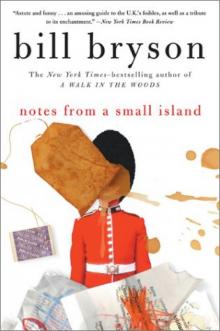 Notes from a Small Island
Notes from a Small Island A Short History of Nearly Everything
A Short History of Nearly Everything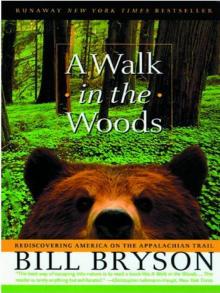 A Walk in the Woods
A Walk in the Woods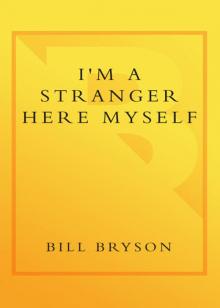 I'm a Stranger Here Myself
I'm a Stranger Here Myself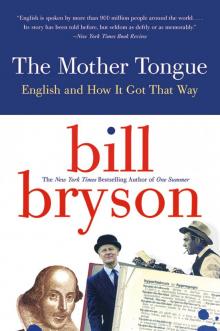 The Mother Tongue
The Mother Tongue Shakespeare
Shakespeare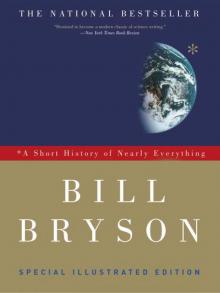 A Short History of Nearly Everything: Special Illustrated Edition
A Short History of Nearly Everything: Special Illustrated Edition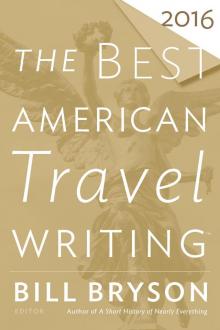 The Best American Travel Writing 2016
The Best American Travel Writing 2016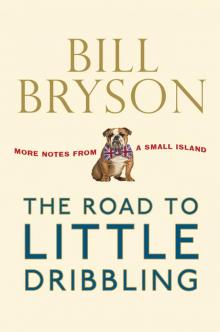 The Road to Little Dribbling
The Road to Little Dribbling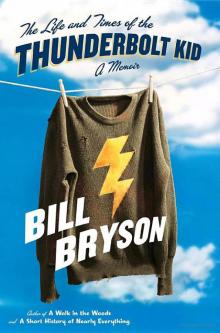 The Life And Times Of The Thunderbolt Kid: A Memoir (v5.0)
The Life And Times Of The Thunderbolt Kid: A Memoir (v5.0) Made In America
Made In America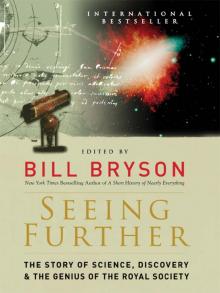 Seeing Further
Seeing Further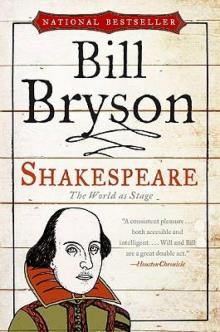 Shakespeare: The World as Stage
Shakespeare: The World as Stage The Life and Times of the Thunderbolt Kid
The Life and Times of the Thunderbolt Kid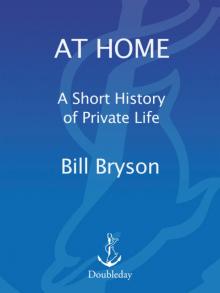 At Home
At Home Bryson's Dictionary For Writers And Editors (v5.0)
Bryson's Dictionary For Writers And Editors (v5.0) Neither Here Nor There
Neither Here Nor There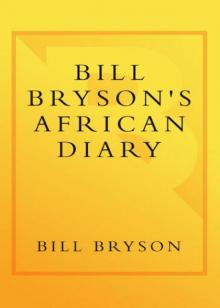 Bill Bryson's African Diary
Bill Bryson's African Diary